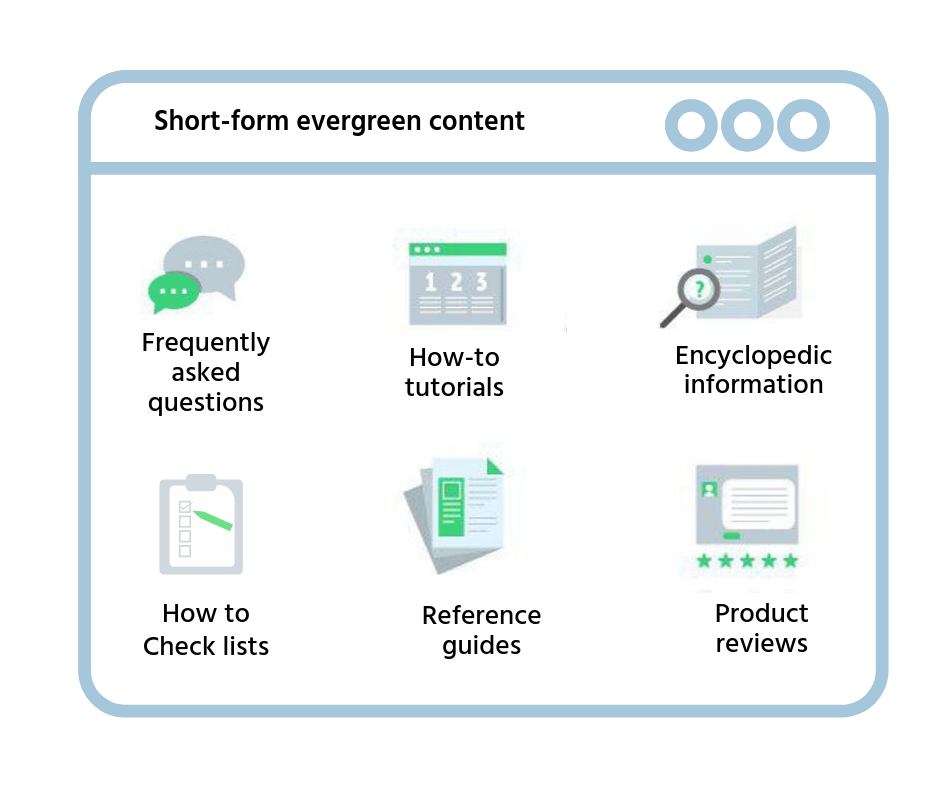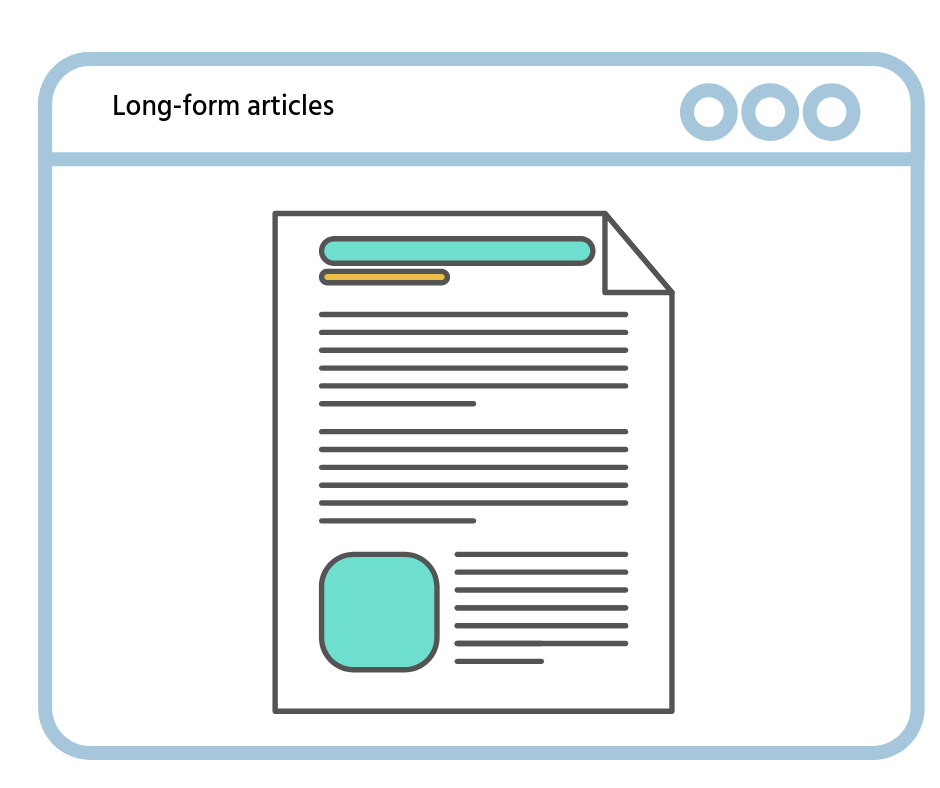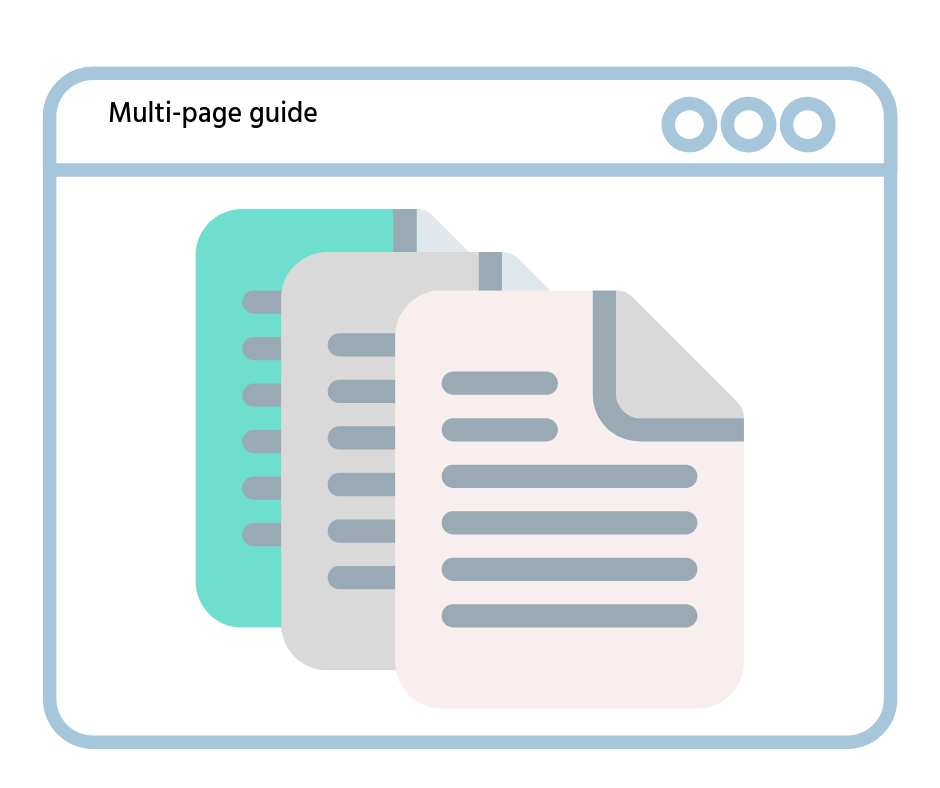
We keep hearing people talking about the superpowers of content marketing and saying that it should be at the core of your digital marketing efforts.
And there’s nothing wrong about this, as we’re also big supporters of this procedure.
“By creating and publishing remarkable content in the form that educates, informs, inspires and entertains, marketers can begin to build relationships with prospects early on in the buying cycle”. — Jonathon Lister
However, obtaining great results through content marketing is getting a bit difficult lately, as Google’s algorithms are starting to behave, getting in the way of content creators and their audience.
As a side note, people are already talking about the death of Google Search Traffic and this is something we’re also going to cover a bit later.
Couldn’t agree more.
Still, there are a few things you should know about this before starting to write and write then write some more.
For example, not just any type of article will bring you a lot of traffic and engagement. Yes, the quality might be top notch, but in a lot of cases, it’s also the format that makes a difference.
Therefore, I’ve made a list with the article formats that Google seems to love, in order to help you jumpstart your content marketing strategy. Also, to make it even easier for you to understand the format, I’ve also added an example for each of these formats.
Let’s begin…
PS; A solid content marketing strategy can even be the core of your SEO efforts, so make sure you give it A LOT of attention!
- Blog Posts
I know, this is kind of a no-brainer, but the traditional blog posts are some of the best types of content you can use. Whether they are regular updates on your business, opinions or a simple story, these can do great as long as they are promoted properly.
In most cases, bloggers stick to somewhere between 500 and 1000 words for their blog posts, depending on how in-depth they’re planning to present the topic.
Here’s a great example, from Brian Dean, at Backlinko:We Analyzed 5 Million Google Search Results. Here’s What We Learned About Organic Click Through Rate
2. Short-form evergreen content

Short-form evergreen content
Evergreen content is something you should definitely have on your blog. Why? Well, because it’s timeless and you can rank for years with such a piece. As for short form, it’s something that can be even 500 words (even though I wouldn’t recommend stick to less) but provides information that’s useful for years.
Before writing a short-form evergreen article, some proper research is needed, as you need to find that killer keyword, able to bring you some serious amounts of traffic.
Neil Patel’s How to Write a Perfect Case Study That Attracts High Paying Clients nails evergreen content.
And this is how such an article can perform, according to BuzzSumo:

3. Long-form articles

Long form articles
Google will always give some extra TLC to those long articles you put a lot of effort into. As long as they’re properly documented and offer valuable information to the reader, of course.
In most cases, an article can be classified as long-form if it has more than 2000 words, but a lot of marketers believe that you can write even 3000. Personally, I believe that 3000 can be a bit too much, as even though you provide some incredibly great information, the average reader can be bored after some time.
Once again, Brian Dean is among the best when it comes to writing huge informative pieces. Check out his guide on video marketing in order to better understand what we’re talking about: Video Marketing: The Definitive Guide
Curious about how it performed? This is what BuzzSumo says:

4. Lists

Or listicles, if you prefer.
I have a very special relationship with these, as they helped me rank with quite a few websites in the past. Also, ever since the introduction of ‘position zero’ in search results – we’re talking about the rich snippets – Google seems to give information-rich lists an additional boost.
Creating a list is relatively easy, as everything you need to do is find a topic, decide upon the elements and make sure you structure them in such way to make everything easy to read. And Google will surely show you some love after hitting that Publish button!
The folks over at CoSchedule got the idea. Check out their 189 Creative Blog Post Ideas That Will Delight Your Audience, ranking first for ‘blog post ideas’.
This is the impact it generated:
5. Multi-page guide

Pretty much my favorite type of article, these are highly informative pieces, spreading over a few pages, from which the reader gets to learn something valuable. Probably the best examples are the SEO guides you can find all across the web, as these cover the basics of search engine optimization, being excellent for beginners and not only.
When writing such articles, it’s very important to structure them well and try using an easy-to-read style. As mentioned above, big chunks of plain text and articles over 2000 words can bore the readers easily, so it’s your job to keep them engaged while reading the entire piece.
How to Create a Social Media Content Calendar for a Year walks you through five steps to persevere at social media marketing by moving from the big picture right down to individual posts. And can be taken as an excellent example…
…as it was a huge success:

6. Comprehensive category landers

Somehow, this is a very special type of content because, in fact, it’s not actually content marketing, but it can still work very good for your business. But in order to better understand how this type of article works, let’s take the following example…
Let’s say that you’re looking for new ideas to redecorate your garden and you land on a page with various garden designs. Just pictures of great looking gardens, but also links on how to redecorate your garden. Obviously, you will click on those because you are interested in the topic!
This category lander can lead you into content pieces, this being the main reason why we believe it’s great for SEO!
HGTV’s Kitchen Ideas is by far one of the best examples we can use for showing how a comprehensive category lander article should look like.
7. Visualized data

It can be pretty boring to go through long chunks of data, so organizing them in a visual way is an excellent way to make sure your readers stay engaged and eventually share your content.
Whether we’re talking about infographics or just standard pie charts presenting various data, they can turn an otherwise boring piece of content, containing just number, into something that people love going through.
Add some text, of course, to describe what you’ve represented, but stick to visuals as much as possible!
After all, it’s way easier to catch somebody’s attention with graphic elements rather than just text, right?
Beth Hayden and Rafal Tomal’s A History of Social Media [Infographic] shows you how it’s done.
Ok, so you are now up to date with everything that works great for SEO in terms of content, but there’s still one big question remaining: which format is the best for your business?
Unfortunately, there’s no magic formula for this, so you need to figure it out yourself. But don’t worry, as I have some insights on this as well!
It starts with trying to determine the searcher’s intent and what are they trying to accomplish while searching for something on Google. And the most common situations are the following:
- Finding a quick answer to a question
- Looking for a complex comparison on two different products or services
- A broad overview on something
- A random search, out of curiosity
- Professional and scientific information
- Multi-threaded exploration
Now your job is easier.
Is the main part of the content on your website resonating with the situations presented above? If the answer is ‘yes’, you can pick one of the formats we’ve talked about above and try adapting your idea with them.
Again, I will never claim that I have the ultimate solution for this, as when it comes to content marketing, one of the main things you should do constantly is to test. Test content types like crazy and identify the one your audience resonates with the most. But this is something we will cover in detail another time.
Also, don’t forget about measuring your articles’ performance after some time, using a tool like Buzzsumo and see how it performs in terms of traffic, engagement but also social media engagement. Because hey, all of these count a lot!
I would love to hear from you regarding this topic. Which type of article have you identified as the best for your business and why? What kind of results did you manage to obtain with it?
The comments section down below is waiting!



Leave a Reply